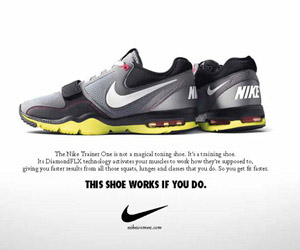A tiny computer lurks in a corner of my pocket along with spare change, lint, my wallet, car keys, writing pen and a few quarters.
That means I either have huge pockets or that computer is very small. If you are a betting person, choose the latter.
It's not really a computer. It's a 4 gigabyte Cruzer USB flash drive. It can hold about 72 hours of music, 44 hours of video, or about 4 billion characters of data. The tiny little piece of memory can hold as much music as my 4 gigabyte iPod Nano.
My drive contains photos, copies of Web projects, PDFs of manuals, a few videos and a complete back-up of my personal Web site. It also has several portable software programs in case I am forced to use a computer that doesn't have my favorite software. That can come in handy when you are using a shared computer in the lobby of hotel 500 miles from home.
|
Recommendation |
 |
|
USB geek factor |
 |
|
PortableApps geek factor |
 |
|
Encryption geek factor |
 + + |
Pros
- Superior encryption that exceeds government specifications
- Open source software can be better than commercial software. Open source software users love it. They are quick to help by pointing out bugs that might escape notice by commercial software vendors.
- USB drives are easy to use.
Cons
- Encryption software is complex. It may be difficult for many users.
- Make frequent back-ups. Some USB drives die quickly when heavily abused or ejected improperly.
~Emery Jeffreys
It's more powerful than my first personal computer. Some folks call it a pen drive, jump drive, thumb drive, key chain drive or even a memory stick. Most of them are not much bigger than your thumb.
Many USB owners carry them on key chains. As small as it is, it's easy to lose track of it. I carry mine on a colorful maroon and blue lanyard -- not to be stylish, but to make it easy to see when I am rooting around in my briefcase.
For the non geeks, it's a very small computer memory device that can be plugged into any USB outlet on most modern personal computers.
For the geeks out there, a USB Flash Drive is a NAND-type flash memory integrated with a USB 1.1 or 2.0 interface used as a small, lightweight, removable data storage device. This hot-swappable, non-volatile, solid-state device is compatible with systems that support the USB version the drive uses.
Manufacturers have improved the quality of the ubiquitous chips. Many have faster memory and faster controllers. Some have slick features:
- SanDisk manufactures its popular Cruzer with a titanium-plated case. I've heard tales of the Cruzer Titanium surviving meetings with cars in driveways.
- Ironkey claims to have the most secure USB drive in the world because of built in military grade encryption and online backups in case the device is stolen or lost. To make it even more difficult to break, the device's metal case is filled with epoxy.
There are hundreds of brands of USB drives to choose from. Your best bet is a well-known brand. Check circulars, Sunday newspaper ads and online for specials. Consider the cost of shipping when ordering online. Shipping ads to the cost.
Bigger is better. Faster is better. Choose one with a retractable plug instead of an end cap. The caps are easy to loose.
I have a cheaper approach that can be just as secure as Ironkey's approach. After choosing your device, try these steps:
- Visit portableapps.com to download the latest version of PortableApps. It's free, open source and works very well. PortableApps is a slick menu that resides in the Windows system tray. Portable works for me because it has smaller files than U3.
- While browsing portableapps.com, download the portable version of KeyPass. It's a nifty program that I use to store passwords, credit card numbers and personal account numbers. Do not lose the KeyPass password. It cannot be recovered. The free program is not overly difficult to use. KeyPass uses two different encryption methods -- DES and TwoFish. That means it may take a supercomputer to crack it.
- Take your time. Read the instructions. For most users, the standard set of programs will be what most users need: Portable versions of Open Office, Firefox, Thunderbird and Gimp, the free Photoshop clone.
- Learn how to use the PortableApps backup utility. Make regular backups to your personal computer. The backup utility is one reason I don't worry about losing the thumb drive. KeyPass is the other reason. If the drive is lost, just restore the data from a backup. KeyPass has very high-grade encryption. If anyone finds it, it's practically impossible to crack the password database.
- Last step: Print a label: "Reward if found" followed by your email address. The label doesn't reveal much private information that could lead to stalking by someone who expects to find valuable corporate data. An honest person may try to send an email. Honesty is great. Reward honesty.
Geek alert
To provide an extra layer of security, my drive contains a tiny program known as TrueCrypt. TryeCrypt enables the user to add a virtual encrypted disk or partition.
Neither a partition or virtual drive produced by TrueCrypt can be found on the USB drive. Put the KeyPass database inside the TryeCrypt partition. For real geeks, TrueCrypt uses:



